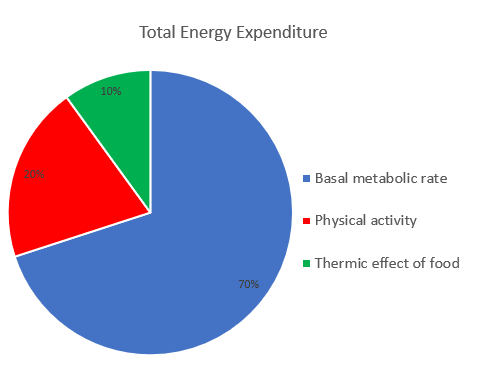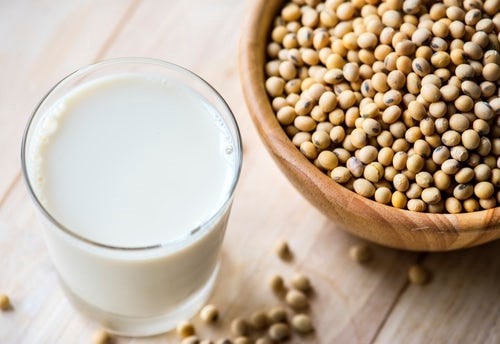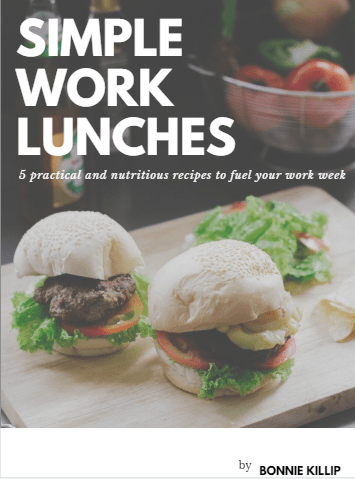Demystifying nutrition and clarifying what it means to eat healthily.
Plus 3 important principles of nutrition and tips on how you can bring these into your life starting today for immediate and lasting improvements in your mood, energy, productivity and overall health.
Hello and welcome to my first post! I am unbelievably excited to have you here and can’t wait to add vitality and power to your life. I have decided to dedicate the first Fuelling Success blog post to clarifying an incredibly important and valuable topic, a topic that is clouded in a great deal of misinformation and confusion and that is Nutrition itself.
It is my intention that this introductory post equip you with the strong healthy eating foundations necessary to fuel you as you continue to create your successful life. To begin with we will take a look at what good nutrition means and why it is important by introducing the macro and micronutrients and how your body uses these. We will then tie it all together with some simple but powerful tips on how you can translate these principles of good nutrition into real world healthy eating strategies beginning today. Because it is little changes like these that will lead to both immediate enhancement of your mood, energy, productivity, engagement and connection as well as longer lasting and further reaching improvements in overall health and disease prevention.
Navigating the Deep Sea of Nutrition Information
The abundance of health and nutrition information available to us is larger and more readily accessible than ever before. To the point where you would literally have to live under a rock to escape it and even then, something would almost certainly filter through… The sheer volume of health and nutrition messages we are exposed to makes deciding what is true and useful a formidable and overwhelming task. Information overload coupled with shiny, celebrity endorsed promises to ‘get the abbs you’ve always wanted by eating these three superfoods’ means most of our nutrition habits have formed on the not so solid base of an unreliable mish-mash of random information picked up here, there and everywhere.
This presents the problem that, while some of the messages are helpful and healthful a great many of them have been concocted purely for marketing and monetisation purposes and are loosely or not at all based on scientific evidence. The repercussions of adopting unreliable health and nutrition practices range from a useless, time and money wasting inconvenience which could be replaced with something that would be of benefit to downright dangerous, damaging and even deadly. Nutrition is fundamental to life, to health, to happiness and to your fulfilment. What we eat impacts every aspect of our lives and nutrition therefore is a field which should not be dictated by opinions or monetisation. Nutrition advice should always be based on the best available current scientific evidence and tailored to your needs as a unique individual.
So, lets clarify…
What Exactly is Nutrition?
Nutrition, as defined by the Oxford Dictionary, is a branch of science that deals with nutrients and nutrition1. Not the most useful definition…
Here’s a simpler and more insightful way to think about nutrition. All foods contain nutrients. The process of digestion releases the nutrients from the foods you have eaten making these nutrients available for your body to use. Your body uses these nutrients to provide both a fuel source and as building blocks for growth, repair and maintenance. At the molecular level your body runs off chemical reactions all of which are directly or indirectly fuelled by the nutrients released from the foods you consume. Ultimately your body needs nutrients to survive and from there you can work up to optimising nutrition in a way that allows you to go beyond surviving to thriving.
From my experience I would define nutrition as the study of how the nutrients contained within the foods we eat interact in our bodies and the effects these interactions have on our health and every aspect of lives.


There are two categories under which nutrients fall:
- Macronutrients (you might have heard people referring to macros?… this is them!) and
- Micronutrients (vitamins and minerals).
First let’s have a look at the macros.
Introduction to the Macros
Macros provide your body with energy (calories or kilojoules) and you need them in large amounts (macro=large). There are 3 groups of macros:
1. Carbohydrate
(for example bread, rice, potato)

2. Protein
(for example meat, fish, eggs, beans and tofu)

3. Fat
(for example butter, oil and avocado)

Energy (calories or kilojoules) is the currency your body uses to engage in life. Your body digests the food you eat to release and absorb nutrients, some of these nutrients then entre metabolic pathways to release stored energy which fuels everything you do. To simplify the numerous roles your body requires energy for we often divide it into 3 categories 1 physical activity, 2 the functioning of your internal organs (called basal metabolic rate or BMR) and 3 the energy that goes towards digestion and absorption of more food (called the thermic effect of food or TEF).
About 20% of the energy released from your typical daily food intake is used to fuel physical activity. The energy from the foods you have eaten fuels your every movement from doing the things, you love, such as surfing or playing with your toddler to the things you may not love so much, like sweeping or washing the dishes. The amount of energy spent on physical activity varies greatly from person to person depending on how active they are. For example someone in training for a marathon would use a far greater amount of energy on physical activity than someone who works an office job and doesn’t engage in any planned exercise.
As well as supplying you with the energy you need to engage in physical activity the macros also fuel the extraordinary amount of energy needed simply to keep a human being alive and functioning at rest. This is called your basal metabolic rate or BMR. You might be surprised to learn that most of the energy (60-70%) released from the macros we eat goes towards fuelling behind the scenes! And by behind the scenes I mean everything that goes on behind our conscious awareness to keep us alive and functioning for example supplying energy to our organs (brain, heart, liver, lungs and so on). Take a moment to truly appreciate and thank your incredible body.
The final 10% of your total energy intake is used to fuel your gut as it digests, releases and absorbs the nutrients from the foods we eat so that this whole amazing process continue allowing us to go on living, healing, playing, working, laughing and creating!
To illustrate the three basic categories of how your body uses the energy you consume I have created this simple pie chart. Imagine starting with 100% of the energy your body is going to use in a day (whatever amount this may be, it is different for all of us). This represents the full circle.
From this total of 100% approximately 70% goes towards keeping you alive (the blue section, BMR), 20% towards physical activity (the red section) and 10% to digesting food (the green section, TEF).

I’ll also mention quickly that macros are valuable for more reasons than just to provide your body with energy. They also provide the raw building blocks for building the tissues of your body from bones to muscle. As a few examples your body needs protein to build muscle (protein is also necessary for proper immune function, healing, hair growth and many more crucial roles) and your body needs fat for proper brain function (fat actually makes up 60% of your brain by weight!).
Introduction to the Micronutrients
Micronutrients
Foods are rarely purely one macronutrient they are generally comprised of a varying mix of the three macros as well as a concoction of the micronutrients as well as other important components that don’t fall under either of these headings such as phytonutrients which we will leave for a future post. Micronutrients is a term that encompasses both:
1. Vitamins
(such as vitamin C and vitamin B12)

2. Minerals
(such as calcium and iron)

Vitamins and minerals are the nutrients your body requires in small amounts compared to the macros (hence the prefix ‘micro’ as in small or microscopic). Vitamins and minerals do not provide you with energy (calories) directly in the same way the macros do however they have numerous and diverse rolls all of which are essential to life.
You’ve probably heard that calcium (found in dairy and most tofu) is important for bone health? This is because calcium, along with another mineral called phosphorus forms the structural scaffolding of your bones ie. keeps them strong so they can support your body while you get around or sit around. In general vitamins and minerals have more than one function in your body for example calcium is also necessary for muscle contraction.

Ok explanations of technical nutrition terms complete. I will be delving deeper into specific functions of micronutrients and macros in future posts but for now, it is enough to have an appreciation of what they are and why they are significant. Let’s move onward to take a look at what this all means, the importance of good nutrition and 3 best buy nutrition principles plus tips on how to implement them into your daily life.
Why is Nutrition Important?
At the crux of it if we did not eat we would die. Our bodies can survive off our reserves for a time (generally cited as 3-4weeks depending on fat reserves) but when that time is up and no more nutrients (food) are coming in the life sustaining reactions such as those which keep our heart pumping and our lungs breathing simply cannot continue.
As humans we oftentimes can be quite removed from a lot of the discomforts the rest of the animal kingdom has to endure (that is of course besides our beloved and pampered pets!) but we have not yet overcome the need to eat.
And if you’re like me the need to eat isn’t something you want to ‘overcome’ anytime soon. Imagine for a moment the pleasure and enjoyment you experience when eating certain foods or how positively enriched many occasions are by sharing foods (think Christmas, Easter, Birthdays or just a quick afternoon trip to the bakery).



In everyday life food has far more significance than simply supplying us with the nutrients and energy needed to sustain chemical reactions within our bodies. In fact you might have never even thought about eating in this way. Lucky, you have hunger signals to remind you that eating really is important!
As I alluded to earlier nutrition has potential far beyond the fact that if we don’t eat we will die. The amounts and types of foods you choose to consume influence your overall health, mood, development or prevention of diseases, productivity, sporting performance, relationships and business success to name just a few of an inexhaustible list.
When we are well fed our bodies work at their best and this allows us to be kinder, spend our energy on things that matter and move us forward not just as individuals but collectively as a species. When you start fuelling your body for success you will make monumental changes in all areas of your life because optimal nutrition turns on your capabilities for successful actions that lead to successful outcomes.
The main principles of nutrition I want you to take with you from this post and begin to actively implement into your life from today onwards to improve your mood, energy levels, productivity and ultimately enjoyment and satisfaction of daily living are those of 1 nutritional adequacy, 2 variety and 3 food first. We will take a deeper look at each of these principles in turn now.
1. Nutritional Adequacy

Nutritional adequacy is exactly what it sounds like and that is eating an adequate amount food to meet your bodies requirements for vitamins and minerals and fuel the energy levels you want.
This may sound simple, but in practice nutritional adequacy is a challenge for many people. If you disagree think about the popularity of products advertised to give you more energy (even our beloved coffee falls under this category). There are numerous reasons why you may be tired and lacking in energy and enthusiasm and they might not all be related to your diet, but I can guarantee a large number of people are simply lacking in the amount of energy they are eating or in a particular/s vitamin or mineral. You may be one of them.
You can imagine nutritional inadequacy as filling your car up halfway and expecting it to drive the distance it would take a full tank of fuel to reach. If you are underfilling your body you will not make it the distance you want to. And this doesn’t just mean if you are running a marathon it means having the energy to concentrate through an afternoon at your desk, being fully present and engaged when playing with your kids or late-night sex.
Whether your inadequate diet is the source of your afternoon slump, worsening migraines, low mood or libido, irritability or not it is a simple and easy place to start making some changes. You might be very surprised at the results and at the very least you have nothing to lose as you’ll only be improving your diet and therefore overall health anyway!
“You cannot live a full life on an empty stomach”
Anonymous.

Addressing the diet for adequacy is always my first port of call when I begin working with a client in making a nutrition assessment. The profound effects simple improvements in nutritional adequacy can have on someone’s overall thoughts, behaviours and life is unbelievable. Our current medical model focuses on acute care and quick fixes meaning that nutritional adequacy is often completely overlooked at huge detriment to the individual.
Furthermore, the importance of nutritional adequacy just doesn’t shine through when the majority of the health and diet messages we are subject to are focused on eating less and cutting calories! Combine this with the reality that our diets are in general higher in processed foods than ever before which are lower in essential nutrients, vitamins and minerals nutritional inadequacy you can begin to see that the threat of nutritional inadequacy is very real.
If you’ve never really questioned the adequacy of your diet and how it might be impacting your mood or if you suspect it might be lacking after reading this information here are a few tips to improve your food intake:
- Eat regular meals & snacks
- Ensure you are prepared with meals and snacks throughout the day by packing the night before ready for work. If you need help with recipes or preparation tips, feel free to send me a message or try out the simple recipe ideas in my free downloadable recipe ebook Simple Work Lunches.
- Include foods which are nutrient dense over the course of the day.
- This generally means foods which are less processed as they contain more nutrients. For example, have a serve of wholegrain bread over white bread or yoghurt with nuts and fruit as a snack rather than a soft drink.
- If you are not eating large amounts, make the foods you are eating count. For example, make sure you are including a source of protein (for example meat, fish, beans, tofu, nuts) carbohydrate (for example sweet potato, rice, bread) and fat (for example nuts, avocado, olive oil) at each main meal.
- Make time to enjoy meals and be mindful of what you are eating.
- If you are rushing through every meal you might not be giving yourself time to eat adequate amounts therefore take time to eat. You have a work lunch break make sure you use it, this is your time to get away from your computer and enjoy your food.
- If you are constantly unprepared with regular meals and snacks and often arrive at meal times starving and not knowing what to eat and choosing quicker options over more nutritious options have some recipes pre-prepared and frozen or in the fridge ready to grab or have some nutritious recipes on hand that are simple and super quick to whip up. For some suggestions take a look at either of my free ebooks Simple Work Lunches and Simple Breakfast Recipes. They both have some very practical and quick to make nutrient rich and delicious recipes.
- Ensure you have a decent breakfast.
- Breakfast is essential to kickstart your metabolism, improve your energy, mood and power your mind for the day ahead. If you aren’t someone who makes time for breakfast, have run out of breakfast ideas or are looking for suggestions download my free ebook Simple breakfast recipes for 7 quick, easy and healthy breakfast ideas or have a google for healthy breakfast recipes which is a little less reliable but better than choosing nothing or relying only on coffee to get you through. Think of breakfast as your time to set yourself up to win, each and every day.
And this brings us to our number 2 key nutrition principal for today Variety.
2. Variety

Are you eating a variety of foods?
As I mentioned earlier most foods are a mix of the macro and micronutrients. This means some foods are higher and some foods lower in specific nutrients than others therefore by including a variety of foods from within each of these five food groups over the course of a meal, day or week you can ensure you get an intake of all the nutrients you need.
A way to illustrate this is using the example of carrots which are high in vitamin A. However, if you were to eat no other vegetables other than carrots you would miss out on other vital nutrients which are higher in other vegetables for example vitamin K which is high in green leafy vegetables is found only in very low amounts in carrots. Therefore, you would have to eat a lot of carrots to meet your bodies requirements for vitamin K. This is just one example and there are many more nutrients within both carrots and green leafy vegetables which make including both of them in your diet useful.
A nice way to ensure you are providing your body with all of the nutrients it needs to function at its best is to eat from all of the five food groups and choose a variety of foods from within the five food groups. This is one of the guidelines of The Australian Dietary Guidelines3 (for more information on the Australian Dietary Guidelines click here https://www.nhmrc.gov.au/guidelines-publications/n55).
Include all 5 food groups below & eat a variety of foods from within each of the groups
- Meat and Alternatives (eg. beef, fish, chicken, tofu, tempeh, legumes, nuts)
- Grains and Cereals (eg. breads, pasta, rice, quinoa, oats, millet, semolina)
- Dairy and Alternatives (eg. milk, cheese, soymilk, canned fish with bones)
- Vegetables (eg. pumpkin, broccoli, onions, carrots, peas, corn, zucchini)
- Fruit (eg. Apples, bananas, strawberries, peaches, watermelon, pineapple)

And the final nutrition principal we will cover for today….
3. Food First


What I mean by food first is choosing real food over any supplements, pills, meal replacements etcetera. Having trained for seven years to understand human biology and nutritional biochemistry I can assure you that no human manufactured vitamins, pills, super shake, magic potions or other such concoctions can take the place of a nutritionally adequate and variety filled diet. There is no substitute for a good diet based off wholefoods.
The human body has been evolving for millions of years to work off eating complete foods not isolated food components. There are many studies which show wholefoods impart health benefits beyond what the isolated vitamins and minerals or other components within them do when taken alone. Therefore, while there are reasons why some people might need to take additional supplements for the most of us we can get all the nutrients our bodies need through consuming a healthy diet that is based off wholefoods.
So, next time you reach for the energy drink, meal replacement shake, protein bar or vitamin bottle consider whether your need or want for these things could be improved through food first. Are you lacking in this or that vitamin because you haven’t gotten it through your diet? Food contains all the vitamins and minerals in the right amounts that most of us require. That is if you are eating a variety and eating adequately. The vitamins and minerals contained in supplements and pills don’t offer us the vast array of nutrients and other beneficial compounds and overall effects that wholefoods do. I could go into this for days and I think I will write a post on supplements soon if you can let me know if you’d be interested in knowing more that would be great!?
For now, choose to make a smoothie with fresh milk, yoghurt and strawberries instead of a packet shake, choose a bowl of fruit salad over the vitamin C pills, choose pumpkin seeds and wheatgerm over the hair, skin and nails vitamin supplements… The list is endless. The evidence and message leads to the same conclusion and that is choose food first.
Take Away Messages
Today we are incredibly blessed that we have access to an unbelievable variety of foods however nutrition has become about more than healthy eating and the amount of misinformation out there can make figuring out how to eat healthy a daunting, confusing and entirely overwhelming task. That is why first and foremost having a reliable source of nutrition information is the best starting point.
You’ve now found the place to get reliable information and it is time to start making it a bit easier on your body and your mind because while your body is clever and will always do the best it can with what you put into your mouth there really are some important ways in which you can get on your own team and help it out substantially. Including following the tips that support the 3 hugely beneficial and unfortunately underappreciated nutritional principals that we spoke about in this post.
Nutrition as a science is exceptionally complex. But the good news is you don’t have to understand everything to benefit from practising good nutrition.
…Breathe…
and ask yourself these three questions.
- Am I eating adequate amounts of foods?
- Am I including a variety of foods? and
- Am I choosing foods first? That is not relying on supplements and other ‘magic health potions’ to get my nutritional needs met…
Start practising the tips we’ve discussed so you can confidently answer yes to all three of these questions. You’ve got this.
Write the principals down if you want to. Stick them to your fridge or type them into your phone notes.
1. Adequacy
2. Variety
3. Food First

Healthy eating is eating foods in that allow you to engage in life in the way you desire and deserve. That is what you eat or do not eat does not hold you back from anything you want to do, be and feel.
If you are interested or have any questions regarding your diet please make an appointment to see someone who is qualified to give reliable, evidence-based nutrition advice (aka a dietitian!) or pop us a message here at Fuelling Success to find out how we can work together to further improve your nutrition, quality of life and success!

With all of my heart I hope you found this information useful and inspiring.
Please leave a comment and let me know what you found useful and what you would like to know more (or less) about because your feedback is what ultimately allows me to create the most valuable content for you because remember we are working together to fuel your success.
Become Great. Live Great.
Bonnie.
Reference
- “Nutrition.” English Oxford living dictionaries. 2018. https://en.oxforddictionaries.com/definition/nutrition (1 Aug 2018).
- Chang CY, Ke1 DS, Chen JY. Essential Fatty Acids and Human Brain. Acta Neurol Taiwan 2009;18(4):231-241.
- National Health and Medical Research Council (2013) Australian Dietary Guidelines Summary. Canberra: National Health and Medical Research Council.






2 thoughts on “What is “Healthy Eating” Anyway?”
Beautiful post Bon, I loved the detail here and love your easy tp read and fun style of writing.
Thank you gorgeous Dom I am so happy to hear that you loved the information in the post and found it fun to read at the same time! I really appreciate your feedback so thank you dearly <3